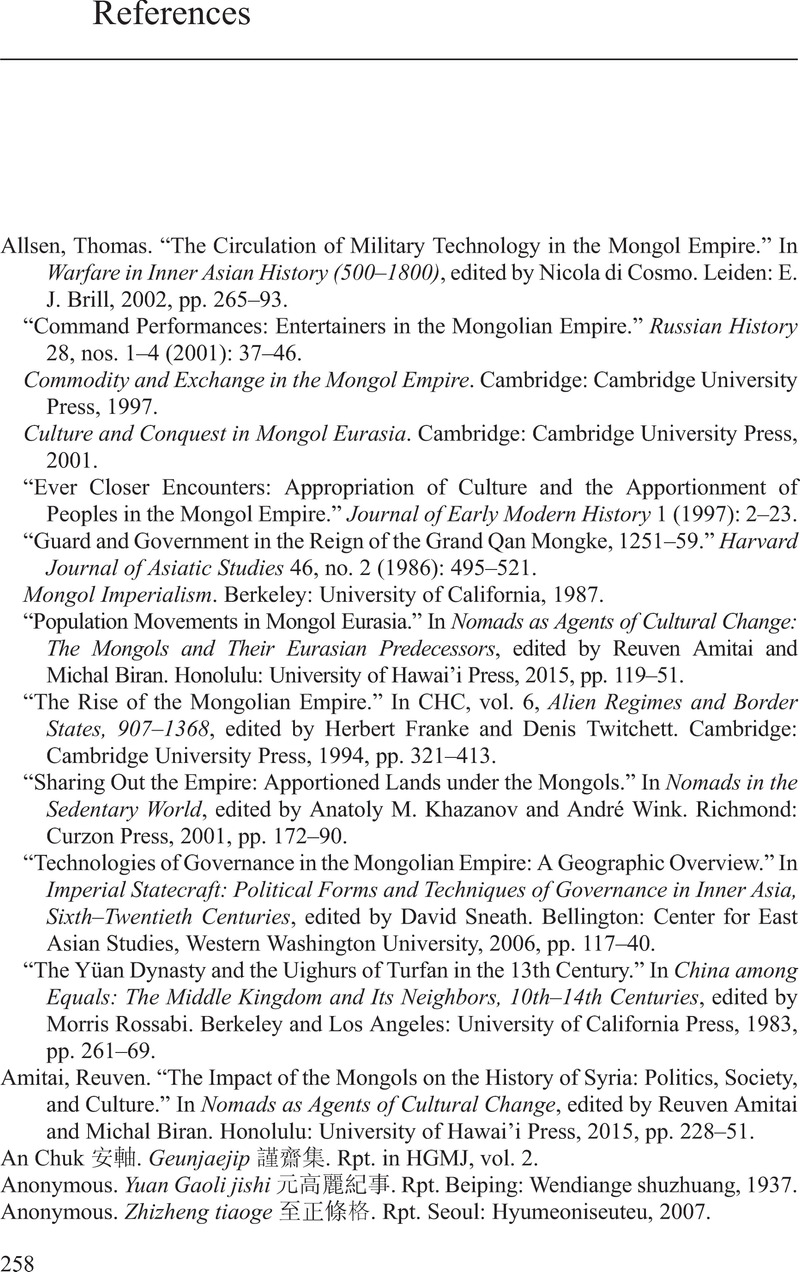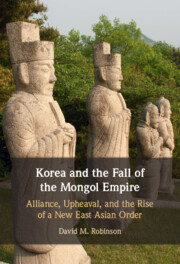Book contents
- Korea and the Fall of the Mongol Empire
- Korea and the Fall of the Mongol Empire
- Copyright page
- Dedication
- Contents
- Charts
- Maps
- Kings of the Late Goryeo Period
- Preface
- Acknowledgments
- Abbreviations
- Introduction
- 1 Child of Empire: 1330–1341
- 2 A Decade at the Yuan Court: 1341–1351
- 3 The Goryeo Dynasty on the Eve of Wang Gi’s Enthronement: 1341–1351
- 4 Becoming the Goryeo King: 1351–1353
- 5 Ally in Collapse: 1354–1355
- 6 Redefining Allegiance: The Summer of 1356
- 7 A Tipping Point: 1357–1367
- 8 Choosing a New Lord: 1368–1370
- 9 A New Age: 1370–1374
- Conclusion
- References
- Index
- References
References
Published online by Cambridge University Press: 24 March 2022
- Korea and the Fall of the Mongol Empire
- Korea and the Fall of the Mongol Empire
- Copyright page
- Dedication
- Contents
- Charts
- Maps
- Kings of the Late Goryeo Period
- Preface
- Acknowledgments
- Abbreviations
- Introduction
- 1 Child of Empire: 1330–1341
- 2 A Decade at the Yuan Court: 1341–1351
- 3 The Goryeo Dynasty on the Eve of Wang Gi’s Enthronement: 1341–1351
- 4 Becoming the Goryeo King: 1351–1353
- 5 Ally in Collapse: 1354–1355
- 6 Redefining Allegiance: The Summer of 1356
- 7 A Tipping Point: 1357–1367
- 8 Choosing a New Lord: 1368–1370
- 9 A New Age: 1370–1374
- Conclusion
- References
- Index
- References
Summary

- Type
- Chapter
- Information
- Korea and the Fall of the Mongol EmpireAlliance, Upheaval, and the Rise of a New East Asian Order, pp. 258 - 275Publisher: Cambridge University PressPrint publication year: 2022



